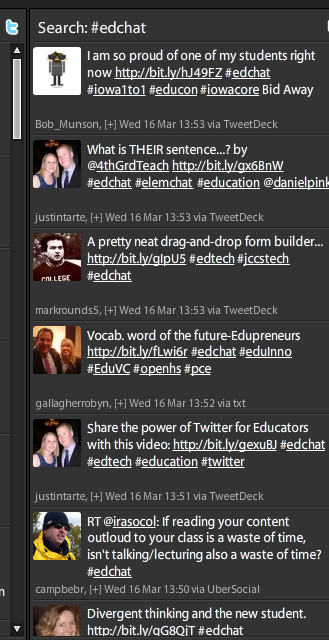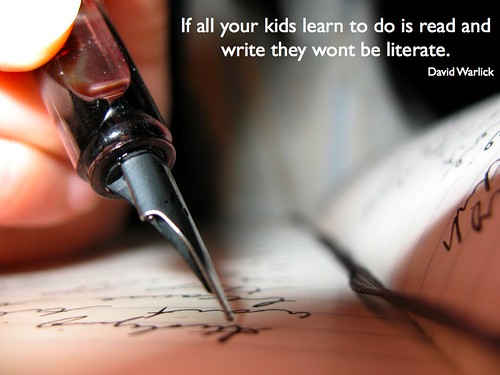
As I’ve already mentioned before, I’m in the process of investigating iPad apps for learning enhancement in the classroom. A few weeks ago a colleague and brilliant music educator, Stuart Collidge, joined me in a meeting with our Deputy Principal (Curriculum) and a few other leaders in the school, to put forward a case for the use of iPads in the school, specifically for learning enhancement. I asked Stuart to write up how he sees the use of the iPad in the music classroom.
Recently, Tania asked me to speak with some of the decision-making powers that be at school to pitch the use of iPads as learning tools. This was something that Tania and I had reflected on a little and saw some potential in so I was more than happy to make the pitch. After borrowing Tania’s iPad to have a play on (I am not yet one of the iPad collective L), I worked my way through a few possible applications and uses. It was also very useful to troll through Google and look at the ways that other music educators are using these beasts.
Being a laptop school, it was important to differentiate the potential of these units from the laptops that are already in the hands of the students. For a school with no laptop program, I imagine that a class set of these would be AWESOME for a whole raft of areas of study, but being outside my brief, I didn’t focus too much on it.
My impression initially (and once we are up and running with a program, I’ll report on the accuracy of those impressions) was that this device would be awesome for me on two levels: as a music/education professional, and as a performer. I can also see how students could use these devices in the same way.
As a performer, the iPad is now a very comprehensive musical instrument. In fact, several instruments all in one. There seem to be two different approaches to performance apps. The first way is to use the device as a synthesiser. There are several things that already do that, but the advantage of the iPad is in the interface which can encourage different approaches to composing and performing. If you sit down at a conventional keyboard, the notes are laid out in a particular way and we are trained to approach the keyboard in that particular way (unless you are into avant garde composition). A lot of music is constructed around melodies and chords that “fit under the fingers”. Take a look at a synth like Musix. The layout of the octaves and notes allows us a melodic freedom and an opportunity to audition sounds that are harder to achieve on a conventional piano. I imagine that you can find many other synths that encourage alternative approaches to melody making.

There is also a variety of apps that are much like a hardware synth allowing you access to oscillators, LFOs, filters, etc. You can also use the iPad to drive Digital Audio Workstations for tracks or DJing live. Ableton seems to be the best suited to creating and manipulating arrangements in a live situation. And for patching your iPad into your amp/PA/recording rig, try this: https://www.alesis.com/iodock.
All of this means that with a few apps and some time, students can generate performance material in a variety of different ways to suit a particular idea or project and allows for a greater degree of creativity and freedom.
As a music professional, I am most interested in using the iPad as music stand. I have spoken with people that do this and received mixed reviews, but I feel that this is where music reading should be going. An iPad could contain an entire library of sheet music in PDF format (solo music, ensemble parts, method books, scores, backing tracks) and would be fantastic to use in performance or rehearsal. No longer need to worry about losing original parts, remembering pencils (the software stores any annotations made), or sorting through libraries of stuff (although the logistics of scanning everything might be headache enough, until publishers are in selling more of their material in that format). Imagine being able to transpose a score instantly into a new key (to my way of thinking, the only way for us to be rid of the archaic institution of transposing instruments).
Of course, it already has a variety of apps that are useful (and which I use on my iPhone) like chromatic tuners, tone generators, metronomes, DMX dipswitch calculators, remote control for lighting desks, decibel meter, power load calculators, chord finders, etc.
All this in a device the size of a small text book!
I am very much looking forward to putting my hands on a unit that I can stock it up with goodies!
Stuart Collidge







 National Gallery of Victoria (Städel exhibition)
National Gallery of Victoria (Städel exhibition) Photo courtesy of
Photo courtesy of 
 Photo courtesy of
Photo courtesy of  Photo courtesy of
Photo courtesy of  Photo courtesy of
Photo courtesy of